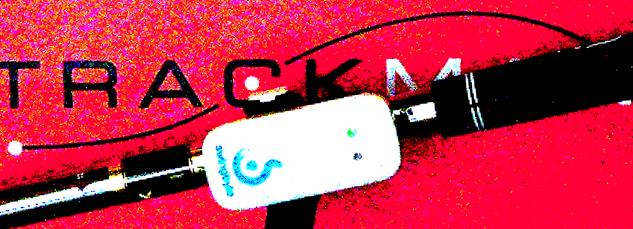Swingbyte vs TrackMan
/ I was recently contacted by Swingbyte and asked to test their device to see how the data it generated held up against data generated by TrackMan. Please remember this is not a contest and I am not saying that TrackMan is perfect (I'm not sure there is such a thing), but I do believe TrackMan is the benchmark when it comes to reporting club and ball data in golf and I was interested to see how a $150 swing aid held up.
I was recently contacted by Swingbyte and asked to test their device to see how the data it generated held up against data generated by TrackMan. Please remember this is not a contest and I am not saying that TrackMan is perfect (I'm not sure there is such a thing), but I do believe TrackMan is the benchmark when it comes to reporting club and ball data in golf and I was interested to see how a $150 swing aid held up.
Swingbyte is a swing analyzing device that attaches to your club just below the grip and sends data to a mobile phone or tablet via Bluetooth. With a price point of $150 it provides a tremendous amount of data and sifting through the information on the App might be a little confusing at first, but with patience you will eventually find what you're looking for.
Having used TrackMan for a long time one of the notable things I've found with passionate golfers is that the direction the clubhead is travelling through impact (attack angle and club path) is generally quite consistent. When testing/comparing other devices to TrackMan, whenever I see a dramatic change from one swing to the next in either attack angle or club path numbers a red flag goes up. With the Swingbyte I hit pitching wedges, 7 irons and drivers and I primarily keyed in on club speed, attack angle, club path and face angle. Here are my ratings out of a possible 5 stars:
Club Speed:
If you purchased the device to simply know your club speed you are ahead of the game. It is important to enter detailed specs from each club into the App, but once you've got that done the feedback is surprisingly accurate. All the numbers I saw were within 4 mph of where TrackMan reported. (4.5 out of 5)
Attack Angle:
It is important to know that TrackMan and Swingbyte report attack angle from slightly different portions of the swing and thus differences should be expected, however I thought the device did a fairly accurate job most of the time. With the irons I felt the numbers indicated were close enough to "actual" in order to be actionable. It did seem that attack angles with the driver were a little too ascending. Their were also a few crazy numbers reported, but as you use the device more you'll easily be able to recognize any outliers. (3.5 out of 5)
Club Path:
These numbers were a long way from what TrackMan was reporting and I would not put too much into this particular parameter. For example with the driver TrackMan reported my average club path on multiple shots was 0.2 degrees out to in, while Swingbyte indicated that every swing I made was from in to out with a range of 1.7 degrees to 13.6 degrees from in to out. (1 out of 5)
Face Angle:
Even with TrackMan I seldom give much credence to the reported face angle as it is too easily influenced by off center hits and I most often use the reported number to determine where the ball was struck on the face. The original Swingbyte reports face angle at impact relative to where it was aligned at address. Assuming you have aligned the device on the club correctly, start with a square clubface and no twisting occurs, you might get an actionable reading - otherwise, I'd move on. (1 out of 5)
The problem Swingbyte has faced is that it could not latch onto a target - it only registered where the device was aligned at address. This means that any data regarding club path and face angle is based around where the device was aimed at address. The Swingbyte 2 addresses this issue. Founder and CEO, Alex Pedenko had the following to say:
You can now point your iPad and it will know what your target is and figure out all the numbers based on that. So now you have true, accurate numbers about what you did, not just in general but relative to the target line, relative to where you want it to go.
I am hoping that these upgrades will make this already useful device even better. While the device is not perfect (what is?) and should not replace quality coaching I feel that with a few practice sessions any golfer can start to gain a better understanding of what they need to do in order to make progress.








